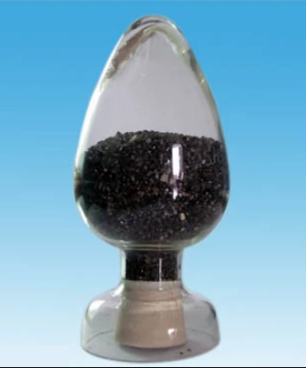tin concentrate smelting
smelting of tin concentrate (smelting of tin conceritrate) is the process of melting the tin concentrate charge and making certain physical and chemical changes to produce crude tin. the main component of the whole process of tin metallurgy, also known as primary smelting. generally required to be melted into the furnace concentrate containing more than 40% tin, too low tin content of the concentrate must be processed before refining. tin concentrate smelting according to the equipment used is divided into reflex furnace smelting tin, electric furnace smelting tin, blast furnace smelting tin, converter (short kiln) smelting tin, top-blowing converter smelting tin and sailor method of smelting tin.

introduction
tin concentrate smelting (smelting of tin conceritrate) is the process of melting tin concentrate furnace charge, so that it undergoes certain physical and chemical changes, the output of crude tin. the main component of the whole process of tin metallurgy, also known as primary smelting. generally required to be melted into the furnace concentrate containing more than 40% tin, too low tin content of the concentrate must be processed before refining. tin concentrate smelting according to the equipment used is divided into reflex furnace tin, electric furnace tin, blast furnace tin, converter (short kiln) tin, top-blowing converter tin and sailor method of tin refining.
reduction melting method
based on the easy reduction of tin oxide (sno2), the reduction melting method has been used to produce crude tin from tin concentrates. this method consists of two (stages) reduction melting processes. the primary smelting is at high temperature and under a suitable reducing atmosphere. smelting tin concentrate to obtain a more pure crude tin, while the output of tin-rich slag containing 8%-16% tin, the second smelting is in a higher temperature and strong reducing atmosphere than the primary smelting smelting tin-rich slag, the output of hard head (an alloy of iron and tin) and poor slag, hard head back to the primary smelting. the total recovery of tin concentrate by two melting stages (to fine tin) is 97%-98%. in order to reduce the circulation of iron and tin in the melting process and improve the recovery of tin, the secondary melting is gradually replaced by the sulphide volatilization method in the smelting furnace.
tin concentrate leaching
tin concentrate leaching (leaching of tin concentrate) refers to the process of removing oxide impurities from tin concentrate by dissolving them in hydrochloric acid, which is one of the pre-treatment methods for tin concentrate refining. hydrochloric acid does not react with cassiterite, but dissolves iron, bismuth, lead and other oxide impurities with higher efficiency than sulfuric acid, and does not bring in sulfur like the use of sulfuric acid, so generally use hydrochloric acid as a leaching agent. tin concentrates containing sulfide impurities are subjected to roasting treatment.
tin concentrate roasting
tin concentrate roasting (roasting of tin concentrate) is the process of heating tin concentrate in a controlled furnace atmosphere to remove impurities. it is one of the methods of tin concentrate pre-treatment, mainly removing impurities such as sulfur, arsenic, antimony, lead, bismuth and tungsten.
the history of tin concentrate roasting is not long. since the 1950s, the tin concentrates mined from vein tin deposits are more complex in composition and need to be roasted to remove some impurities before smelting. roasting of tin concentrates has only gradually been promoted.
tin concentrate pre-refining treatment
tin concentrate pre-treatment is the process of removing harmful impurities from tin concentrate and improving its grade, which is part of the tin metallurgical process. tin concentrate with low tin content and many impurities can simplify the smelting process and improve the recovery rate of tin smelting after pre-smelting treatment. reduce the pollution of harmful impurities to the environment, and can effectively recover a variety of valuable metals. the main methods are tin concentrate selection, tin concentrate roasting and tin concentrate leaching.


Comments